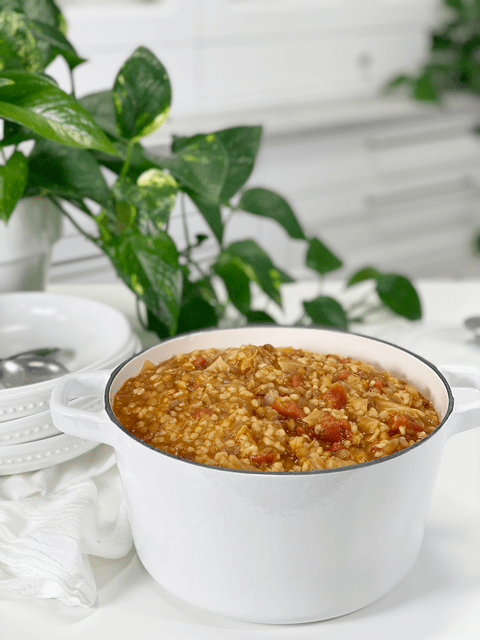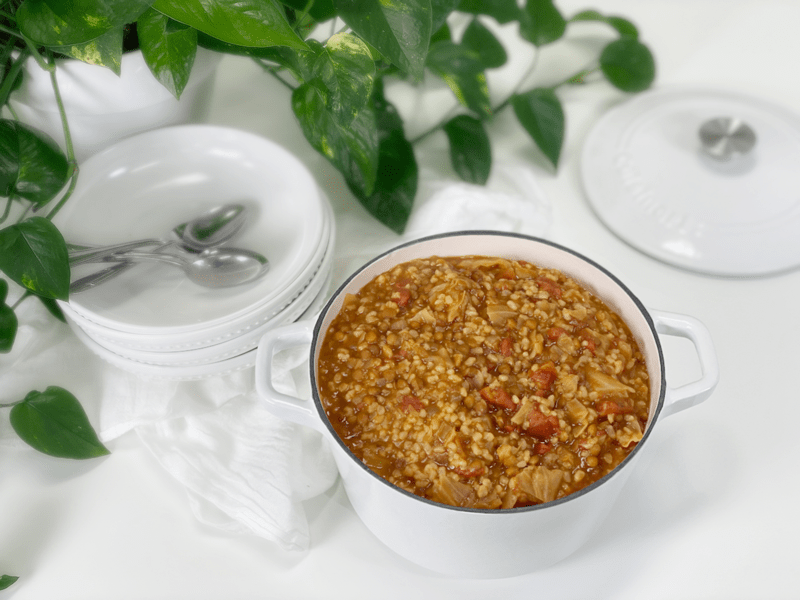


 Add to favorites
Add to favorites
Are you a soup lover? I wasn’t for a long time. It wasn’t that I didn’t like soup–it just never seemed satiating enough, thus not making it worth my time. Silly me. That was way back in the day when I ate out of boxes and cans. Campbell’s Chicken and Stars was my go-to. Thank goodness the love affair with whole foods came into my life, because with that came my love for soup. This soup turned out thick, hearty, and just downright delicious.

To make this picture Instagram worthy, I should have sprinkled chopped parsley on top! DOH!
What I love about this soup is that it is loaded with veggies, texture, and flavor, which equates to a delicious-nutritious-good-for-the-belly meal. If you own an Instant Pot, use it! If you don’t own one, you might want to look into purchasing one. But it’s undoubtedly not a requirement, as I provided stove top instructions as well. Either way, you won’t be disappointed.
I often like to go over why I use the ingredients that I do, but for the most part, everything here is pretty straight forward. The only ingredient that might leave you scratching your head is the addition of kombu seaweed. What the heck, Amie Sue?! I don’t want my soup to taste fishy! Trust me, it won’t affect the flavor at all, but it WILL ramp up the nutritional content! Let me share a brief explanation as to why I add kombu seaweed to my soups, rice, beans, etc.
Kombu is a type of sea kelp that is rich in vitamins and minerals, including potassium, calcium, and iodine. It is a great ingredient to keep stashed in your pantry, as it makes grains and legumes more digestible when added to the cooking water.
It is high in vitamins A, C, E, B1, B2, B6, and B12. Seaweed also contains a substance (ergosterol) that converts to vitamin D in the body. In addition to essential nutrients, seaweeds provide us with carotene, chlorophyll, enzymes, and fiber. And while we are at it…it is high in iodine, which is essential for thyroid functioning! So next time you make soup, oats, rice, vegetable broth, or beans, add a strip into the pot and reap the nutritional benefits of seaweed. Read more (here).
This soup yielded ten lovely cups. Now, that’s a lot of soup. Of course, depending on the size of your family, it might be a single dinner serving. It’s just Bob and me, so I plan to freeze half of it in pint-sized freezer-safe jars. I must have been an army cook in a previous life, because I always seem to make a lot of food. But I have come to learn that it is actually a blessing. I love to take about half of whatever I make and freeze in single portions. By doing this, I am naturally building a surplus of a variety of foods.
Ready to make some soup?! I will meet you in the kitchen. Please leave a comment below and have a blessed day, amie sue
 Ingredients
Ingredientsyields 10 cups
When it comes to storing hot foods, we have a 2-hour window. You don’t want to put piping hot foods directly into the refrigerator. However, If you leave food out to cool and forget about it, you should, after 2 hours, throw it away to prevent the growth of bacteria. (source) Large amounts should be divided into smaller portions and put in shallow, covered containers for quicker cooling in a refrigerator that is set to 40 degrees (F) or below.